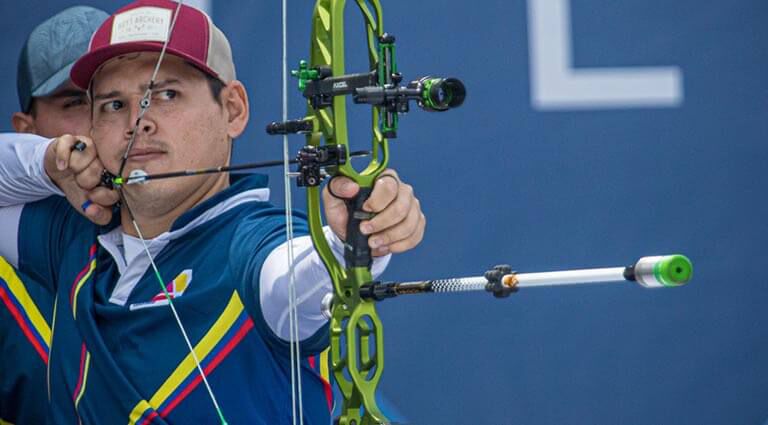Necessary Tips: Picking the Best Compound Bow Stabilizer for Your Configuration
Necessary Tips: Picking the Best Compound Bow Stabilizer for Your Configuration
Blog Article
Maximizing Your Archery Efficiency With the Right Substance Bow Stabilizer: a Thorough Review
One often-overlooked yet essential component in boosting precision is the substance bow stabilizer. By understanding the subtleties of choose and enhancing a compound bow stabilizer, archers can fine-tune their devices to boost their shooting experience to brand-new degrees of efficiency and control.
Importance of Bow Stabilizers in Archery

Additionally, bow stabilizers aid in balancing the weight distribution of the bow, which can enhance the archer's stability while aiming and shooting. By adding weight to the front of the bow, stabilizers can reduce the amount of torque experienced upon launch, resulting in a smoother and more controlled shot - compound bow stabilizer. This weight circulation also assists in holding the bow stable for a longer period, enabling the archer to intend extra accurately
Kinds of Compound Bow Stabilizers
When thinking about the different types of compound bow stabilizers available, it is important to comprehend their unique features and functions to identify the most appropriate option for taking full advantage of archery performance. The most common kinds of compound bow stabilizers include sidebar stabilizers, front stabilizers, and back stabilizers. Back stabilizers, additionally called back stabilizers, are installed to the back of the bow and help in reversing the weight of other devices, resulting in enhanced stability and consistent intending.
Aspects to Think About When Choosing
In reviewing compound bow stabilizers, recognizing the unique attributes and functions of each type is important for making an informed decision on one of the most appropriate option to enhance archery efficiency. When picking a stabilizer, one should consider the weight of the stabilizer itself. While a heavier stabilizer can provide more security by lowering the bow's movement, it may additionally cause exhaustion during lengthy shooting sessions. Balance is one more essential element to ponder. The stabilizer's size and design substantially influence the bow's balance, influencing the shooter's capacity to hold steady objective. In addition, the material of the stabilizer can affect its performance. Carbon fiber stabilizers are lightweight and soak up resonances well, enhancing accuracy. The number and adjustability of dampeners on the stabilizer can adjust its performance by minimizing noise and shock upon launch. By carefully examining these variables, archers can select a substance bow stabilizer that aligns with their shooting style and maximizes their general performance on the archery variety.
Setup and Adjustment Tips
For optimum performance and accuracy Continued in archery, mastering the setup and change of your bow stabilizer is important. Proper installation starts with connecting the stabilizer to the bow's riser, ensuring it is strongly protected.
When adjusting the stabilizer, start with little step-by-step changes instead than radical modifications. This allows you to analyze the effect of each alteration accurately. Take notice of how the bow reacts to modifications you can look here in stabilizer setups and make adjustments appropriately. Keep in mind that the objective is to locate a setup that decreases hand torque, reduces vibration, and boosts accuracy. Consistently check the stabilizer's tightness and general go to this website condition to ensure it remains to operate optimally. By grasping the installment and modification procedure, you can maximize your archery performance and elevate your capturing experience.
Maintenance and Treatment Standards

When not in usage,It is additionally necessary to keep your bow with the stabilizer in a safe and secure area. compound bow stabilizer. Prevent leaving it in severe temperature levels or subjected to direct sunlight for extensive durations, as this could cause damages to the stabilizer. Regularly check the stabilizer's alignment to guarantee it is still properly placed on your bow. Adhering to these maintenance and care standards will assist you get one of the most out of your bow stabilizer and improve your general archery efficiency.
Conclusion
Finally, choosing the appropriate compound bow stabilizer is essential for taking full advantage of archery performance. Recognizing the value, types, variables to think about, installment and adjustment suggestions, as well as maintenance and treatment guidelines can substantially affect one's accuracy and uniformity in shooting. By choosing a stabilizer that matches individual demands and choices, archers can improve their general efficiency and achieve much better outcomes on the array or in competition.
Bow stabilizers play a critical role in improving an archer's precision and consistency by reducing vibrations and maintaining the bow throughout the release of an arrow - compound bow stabilizer.Additionally, bow stabilizers assist in stabilizing the weight circulation of the bow, which can improve the archer's stability while intending and firing. The most usual kinds of compound bow stabilizers include sidebar stabilizers, front stabilizers, and back stabilizers. Back stabilizers, likewise called back stabilizers, are mounted to the back of the bow and assist in reversing the weight of various other devices, resulting in boosted security and consistent intending. When selecting a stabilizer, one must consider the weight of the stabilizer itself
Report this page